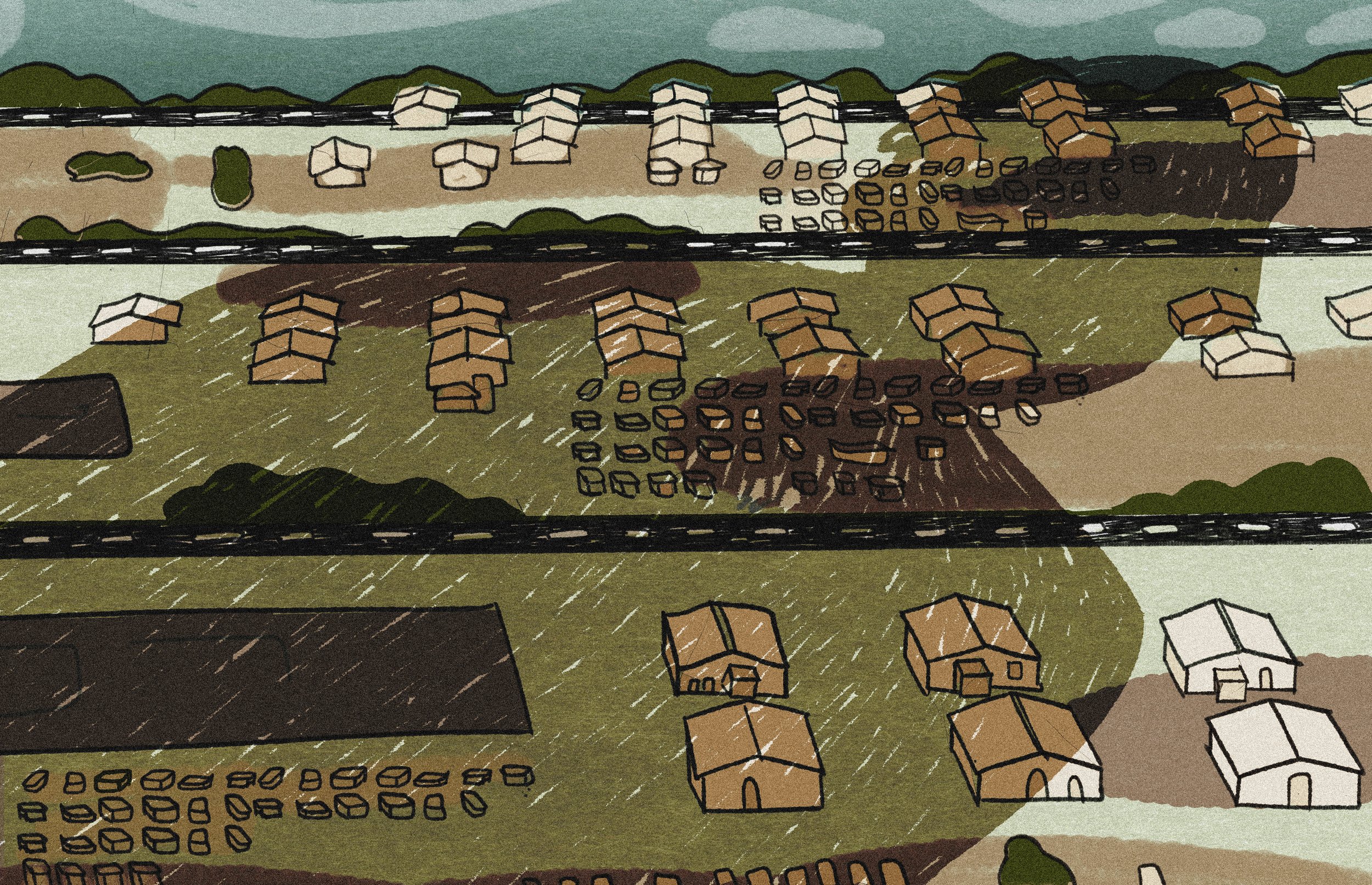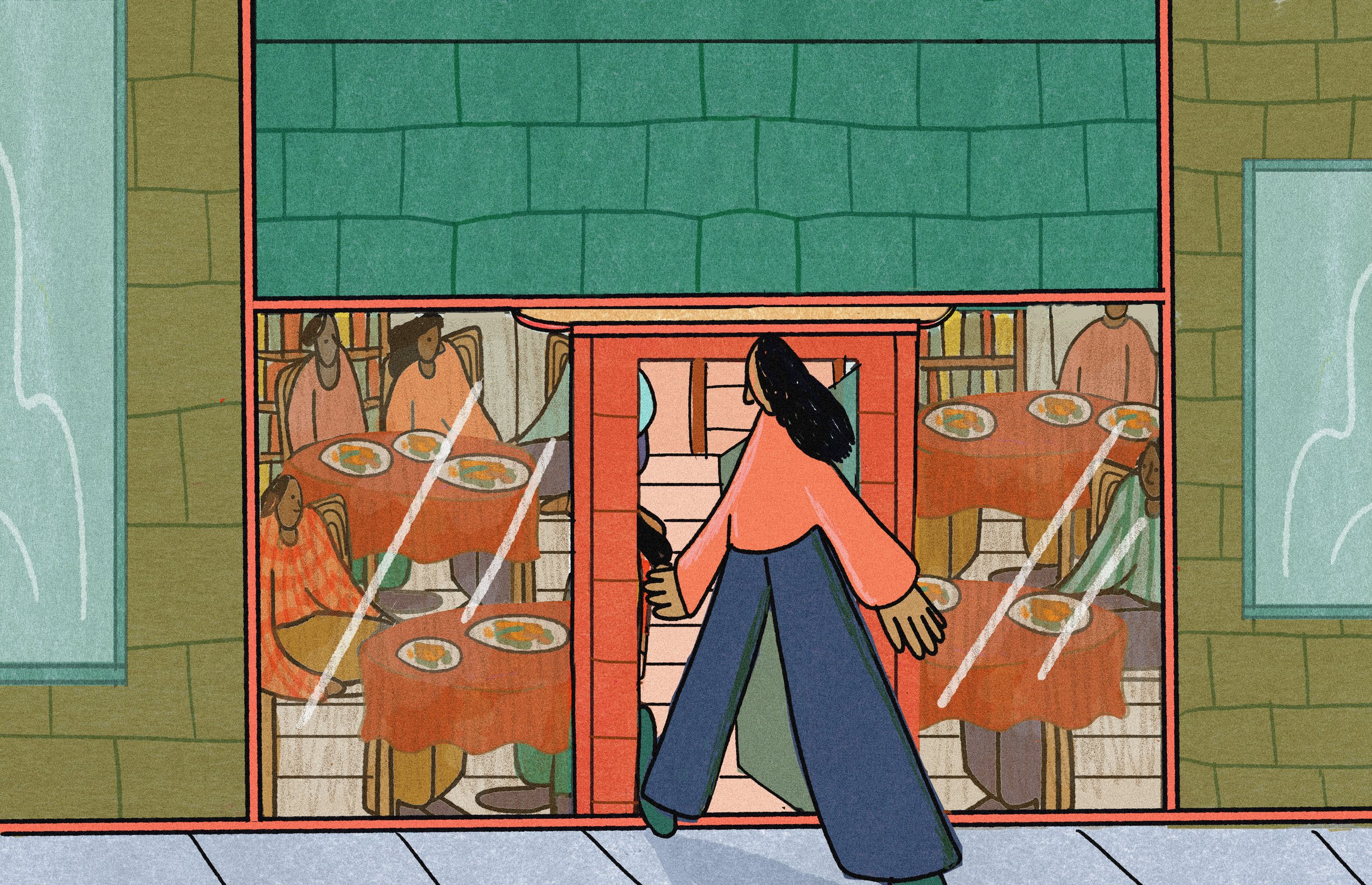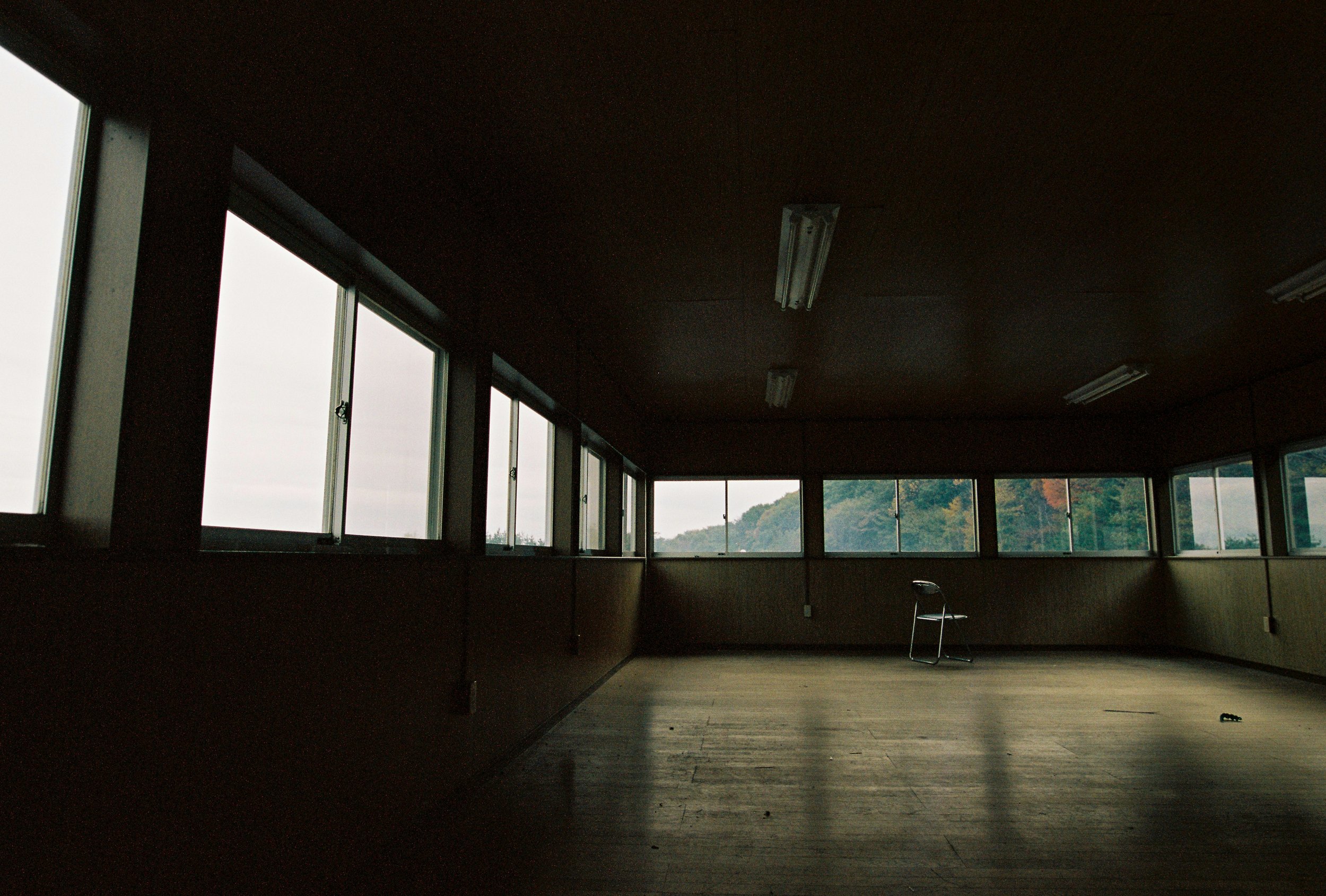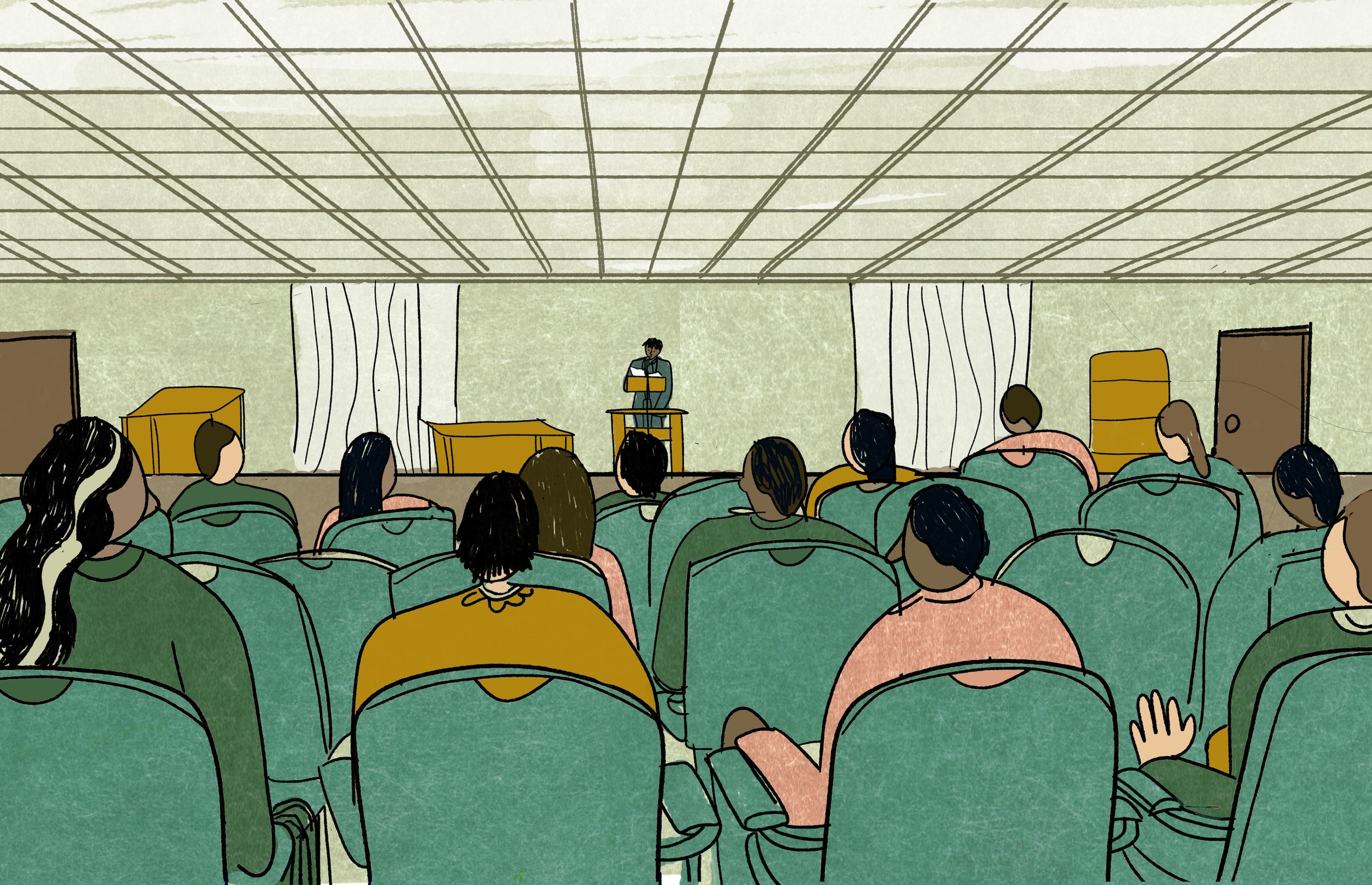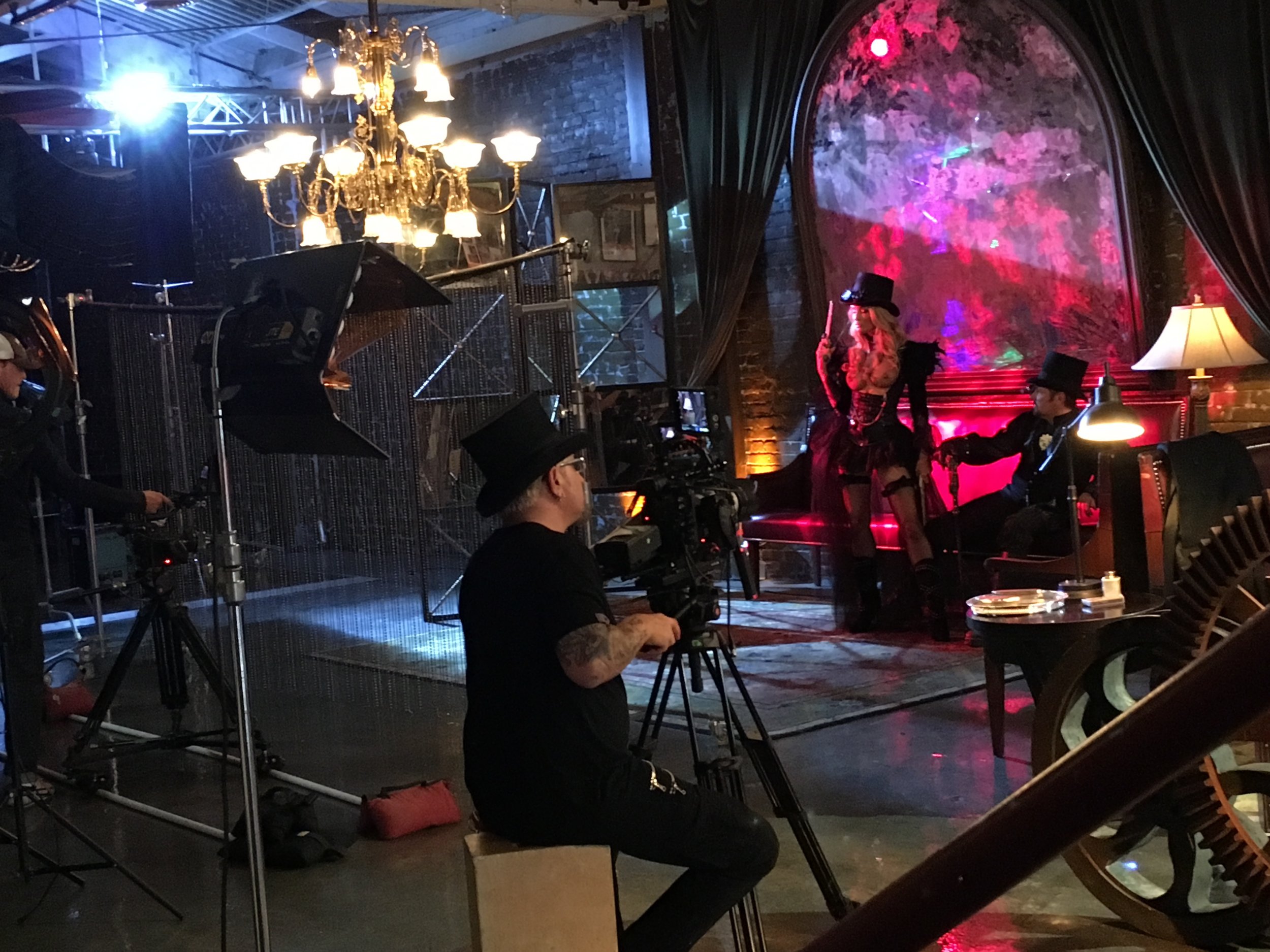Offscreen

Shawna Kenney’s interest in sideshow circus culture led her to volunteer as a knife-thrower’s assistant. What she learned about the human being behind the magic act has perplexed her ever since.
The assignment seemed easy: profile a performer in the circus arts for Swindle Magazine, a pop culture quarterly (now defunct). The subject was a notable extra on a certain hit HBO show of the time period, known for his daring feats and Vaudevillian skills. I first met him at a Hollywood party, where I couldn't help but notice the tall man with slicked-back hair that matched his black turtleneck and pants, topped by a sparkly red vest. He was encircled by young women gasping in awe at his card games and sleight of hands tricks. I asked for his card and pitched the story not long after. Wishing to flex my Gonzo-esque muscles, I decided to immerse myself in his world by volunteering to join him on-stage at an upcoming event. It wasn’t quite my secret fantasy of being the sawed-in-half magician’s assistant, but it would do.
The entertainer heartily agreed, with the caveat that we would need to practice a bit beforehand, for safety reasons, of course. I drove from Los Angeles to meet him at his home in a middle-class neighborhood in central Orange County, where he had a backyard with plenty of room to practice. I saw the house before confirming the address—it was a Brady Bunch-style ranch decaying into an Addams Family-type of monstrosity. Next to the manicured lawns of pastel-painted homes, the grass in the front yard stood nearly as tall as my five feet, surrounding a brown drooping lemon tree that probably hadn’t produced fruit in years. I parked next to the sagging chain link fence and ambled up the cracked sidewalk, hoping to learn some of the secrets of his physical feats of magic. At least I would get a glimpse into what it was like in this niche of performance art, so different from the work I did moving words around on a page all day.
“Well hellloooo, my friend!” my subject boomed in his show-biz voice, tinged with an ambiguous accent of what I presumed to be some Eastern European country. He was fitter and taller than I remembered, and so pale-skinned I realized he must have been wearing stage make-up the first time we’d met. He waved me inside wearing his usual smile and head-to-toe black.
“He pulled out a yellowing newspaper displaying a picture of his father, guns-a-blazing, on the front page. Their entire careers had been documented in various outlets.”
He ushered me through a tightly-packed living room, where newspapers and magazines sat stacked two and three feet-high on coffee tables and couches. My sniffling nose detected a cat but never saw one. We walked through a kitchen where dirty dishes covered the sink and countertops. He offered me water and I declined.
The grass had been partially mowed in the back yard, creating an oval-shaped clearing in the center of tangled foliage. At the edge stood his “wheel of death,” a giant roulette-like contraption upon which an assistant could be strapped in and spun around. In an opposite corner of the yard, a rusting 50s-era truck sank in the dirt, its decomposing body being reclaimed by the vines reaching across its surface and the persistent coastal sun. I set my purse down on a rickety old swing. We ran through the act for about two hours. He explained timing and let me hold some of his knives, which he kept in an ancient-looking black case. I practiced facing the audience and feigning surprise in just the right moments.
Satisfied that we would not screw up or hurt ourselves during our upcoming show, we called it a day. We would meet again at a variety show he’d been invited to perform in at the Motion Picture Association Home and Hospital, where I would assist in the act. I had never heard of the place before but found out it was a retirement community and hospital deep in the San Fernando Valley, dedicated to the long-term care of seniors who had worked in the entertainment industry. Some of its residents were famous, some worked behind the scenes, and many weren’t household names, but anyone who has worked at least twenty steady years in the business is allowed to stay on a “pay what you can” basis, thanks to fundraising and donations. I wondered if this magic man envisioned himself there as a resident one day.
As we walked back through the house, I thought about the long drive home and dared to ask to use the bathroom. It was worse than any truck stop toilet I had encountered, covered in mold and lacking toilet paper or soap. There was a mangled toothbrush resting in a dirty glass on the sink. Back in the living room, we decided to continue some of our previous interview. He only seemed slightly embarrassed when realizing there was no place to sit down.
“I’m sorry, I haven’t had people over in a while,” he said, moving some things from one antique chair to the floor and then gesturing for me to have a seat. He found a spot for himself eventually, too.
Photo provided by the author.
“How long have you lived here?” I had to ask.
“My whole life,” the 50-something-year-old answered in his chipper voice. “I grew up here. My parents left me this house when they died.” Registering the water-logged ceiling and the years worth of stuff surrounding us, I tried hard not to stare at what was impossible to ignore. I didn’t want to make him feel bad.
“It hit me that we were sitting in something more like a museum or memorial, one steeped in grief.”
“And where were they from?” I asked, hoping to pin down that subtle accent.
“Here,” he shrugged.
“Orange County?” I was bewildered. “But… your accent?”
He chuckled. “Many people say I have one but I don’t hear it. I’m a fourth-generation Californian.” He went on to explain that his father had been an entertainer as well, a professional rope-tricking, whip-wielding, target-shooting movie cowboy. Then he reached toward a stack of papers nearby, flipped to the middle, and pulled out a yellowing newspaper displaying a picture of his father, guns-a-blazing, on the front page. He turned around toward another stack and pulled out an old issue of Vanity Fair, flipping to a page with a small inset photo of his father and friends, as well. This lead to him picking out clippings about himself from various piles, each of which he carefully handed me and returned to its previous spot. Their entire careers had been documented in various outlets.
My disgust at the state of this man’s home alchemized. It hit me that we were sitting in something more like a museum or memorial, one steeped in grief. My peek into his world was a privilege, not just something to do for laughs. I wanted to hug this man but that would not have been professional. This was the backstage, the green room, the wizard’s booth behind the curtain. It wouldn’t be right to reveal what he could not yet see in himself… or maybe he did, but even so, it would not fit the angle of the publication. I wondered if Hunter S. Thompson or Susan Orlean ever choked back tears in the midst of experiential reporting.
Two weeks later, we went on with the show, following a family of twelve Armenian gymnasts and a pair of growling pugs dressed as bulls. My partner wore a blousy red shirt with black marching band pants; I wore a black miniskirt, fishnets, a red polka-dotted top and matching ruffle-butt panties, revealed in the campy staged photos we shot beforehand. The beautiful theater was packed, some audience members in wheelchairs or attached to oxygen tanks and tended to by nurses. Our act went off without a hitch, his melodramatic voice narrating each trick over a recorded soundtrack, building to a big “ta da!” punctuating our feats. At the end of it all, the performer elegantly took my hand, led me to the front of the stage with the grace of a ballet dancer, and together we bowed to an applauding audience.
A couple of years later, while working for the same magazine, I interviewed a former child star over dinner in Beverly Hills. As we finished eating, the subject of my story asked if I would like to come back to his home to see his collection of toy trains. The photographer with me nudged my arm, hoping I’d say yes. “No thanks,” I said. “I have to get this in on deadline.” He looked dejected by my answer. Maybe I made the wrong decision but I was tired that night and just not feeling up to absorbing the vibes of someone else’s space. I feel fortunate to meet so many fascinating people in my line of work—rock stars, rappers, sex workers, filmmakers, graffiti artists, activists and real life world-changing culture creators. My life has been enriched by each of them, but few people know the ones who will stick with me forever.
ABOUT THE AUTHOR
Shawna Kenney is the author of I Was a Teenage Dominatrix (Last Gasp), co-author of Imposters (Mark Batty Publisher), editor of Book Lovers (Seal Press), and co-author of Live at the Safari Club: A History of HarDCore Punk in the Nation’s Capital 1988-1998 (Rare Bird Books). Her work has appeared in The New York Times, Playboy, Creative Nonfiction, Vice, Brevity and more. She lives in Los Angeles where she serves as an instructor in the UCLA Extension Writers’ Program and is a Contributing Editor with Narratively magazine.
Header Photo by Eric Tompkins.



